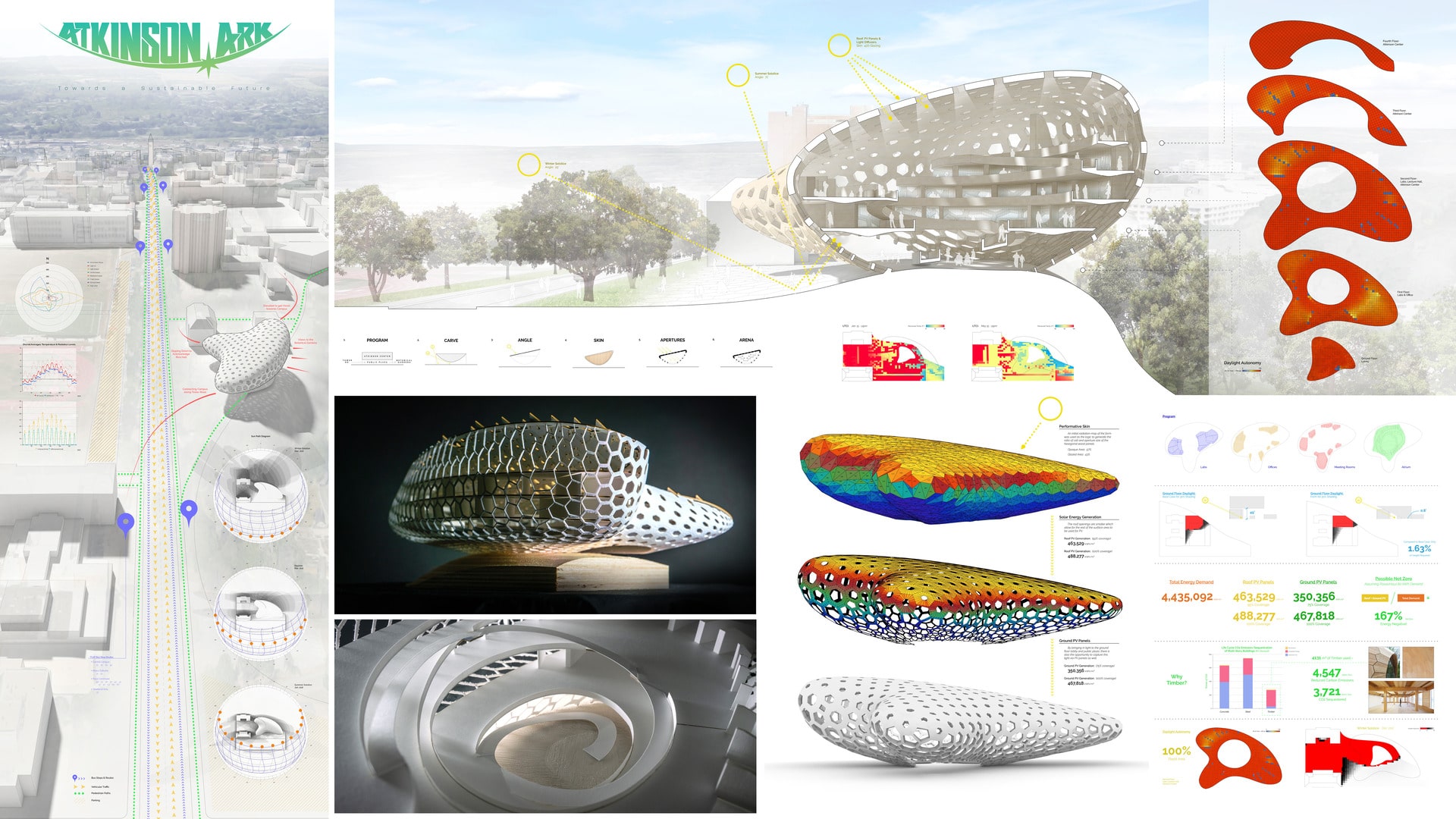Project Description
The Atkinson Ark serves as an architectural beacon for sustainability in its use of daylight that strives to embody the mission of the Atkinson Center. The Atkinson Center for Sustainability is a hub of collaborative sustainability research among researchers, students, staff, and external partners. The Center seeks to be its University's home to bold ideas and powerful new models that ensure people and the planet not only survive, but thrive. The Center is looking to design and build its own academic building where it can successfully act as its University’s global sustainability research and collaboration center. It is sited overlooking a beautiful valley at the crossroads of two epicenters of the University’s campus between the main historic central campus where most of its core curriculum and facilities are located and the newly constructed veterinarian school towards the east. The Center’s site serves as an important linkage between these two campuses along a major road and presents an opportunity to draw visitors in. To achieve this the design needs to both serve as an architectural beacon to attract visitors while still functioning performatively to adhere to the Center’s goals for sustainability innovation. In this studio the use of daylight as the primary formal driver is meant to be analyzed to achieve a radical but rational final design. The design seeks to redefine what a typical green building could look like and needed to express both its rationality in its environmental and sustainable functionality while also directly and overtly displaying those capabilities to passerby and the research center’s users and visitors. It accomplishes this by expressing itself less of a traditional building and more of a futuristic Ark meant to gather researchers and passionate students and faculty to conduct research in the hopes of creating a greener future. Initial sustainability analysis related to adequate interior daylighting is expressed through the inward bottom curve of the building which allows for 80% daylighting of its ground floor interior during the Winter Solstice. With initial massing studies, the research found that the same 80% benchmark for daylight of the ground floor for a normal cube building would require it to have a 49’ ground floor lobby or for it to be 49’ in the air. With only 1.63% of that height needed with a proper angling of the façade, this allows for excellent shading and daylighting during the summer and winter months allowing for pleasant outdoor thermal comfort in the plaza the Ark creates around itself. With this much daylighting entering the ground floor and south-facing plaza throughout the year, there is also the potential to outfit the ground as well as the building’s shell with PV panels allowing it to gather energy year round. The building is estimated to generate 463,529 kWh/m2 from a 95% coverage of its roof with PV panels and 350,356 kWh/m2 75% ground coverage. When assuming an optimized PassivHaus 60 kWh demand for the building, this then makes the building 167% energy negative with this combined energy generation. This performative aspect of the building shell is another important consideration in the design’s functionality and formal language with its parameterized façade system that was derived from the form’s radiation map. The Ark’s panelized façade has apertures whose openings are linked to the form’s radiation map, so that smaller openings are on the roof to allow diffused skylights yet still allow for a large plane for PV arrays. These smaller apertures transition and wrap down the form to larger window openings that allow for both beautiful views of the surrounding natural landscape as well as cross ventilation from the south to north of the site. This allows for the interior research, lab, and collaboration spaces to be well lit and well ventilated to encourage the Center’s mission of radical collaboration.To also encourage a warmer yet sustainable environment the major material the Ark utilizes is prefabricated beech plywood panels that are robotically manufactured. By using 4,131 m³ of timber in the building, it reduces 4,547 metric tons of carbon emission reduction, compared to if steel or concrete were used, and sequesters 3,721 metric tons of CO2. The Ark’s design represents the work going on inside, elevating the institutional goals of the users by integrating it into the creation of the architecture. The project uses its performative skin to communicate this to the community of scholars, students, and staff of the University to invite them in to collaborate.
